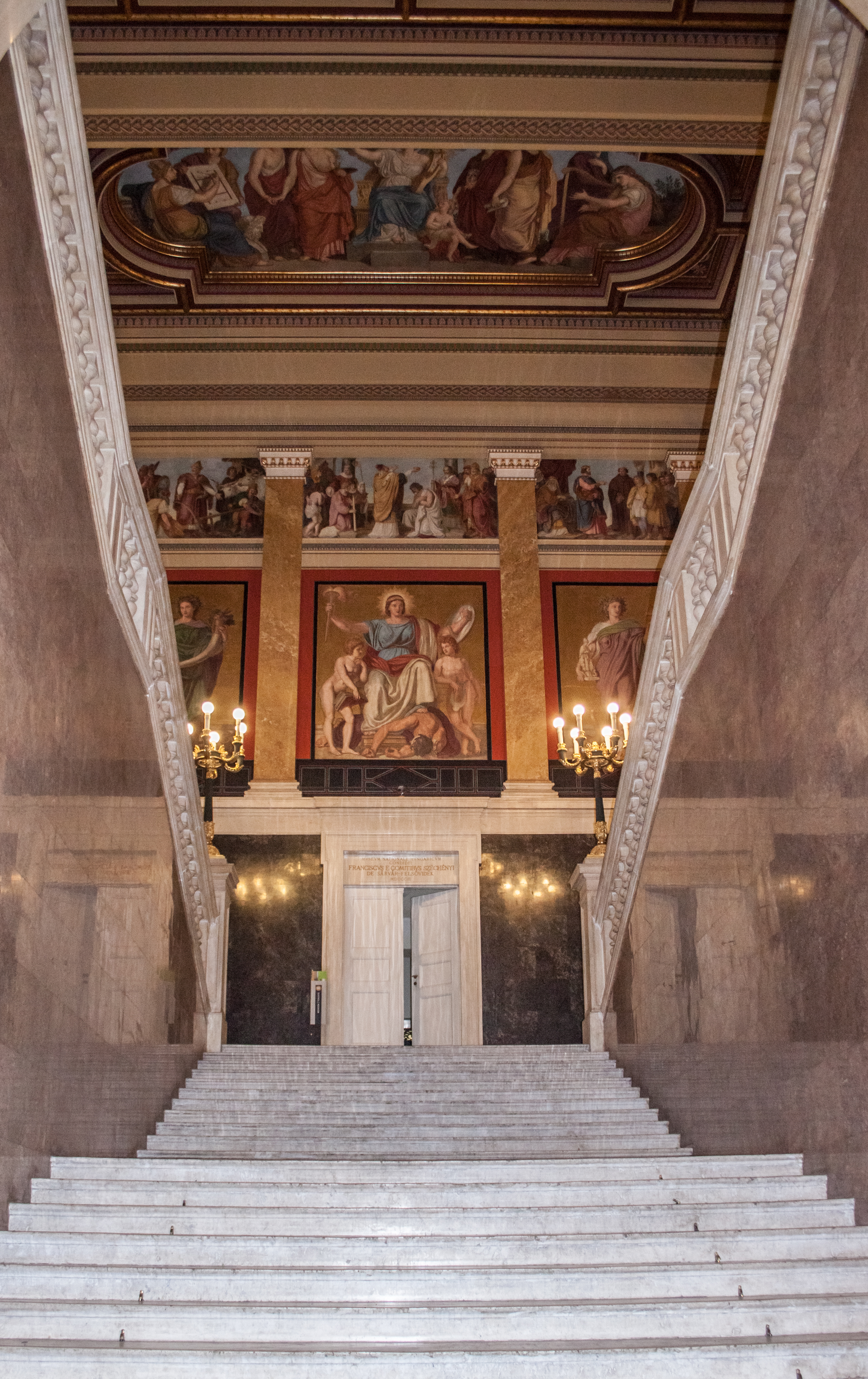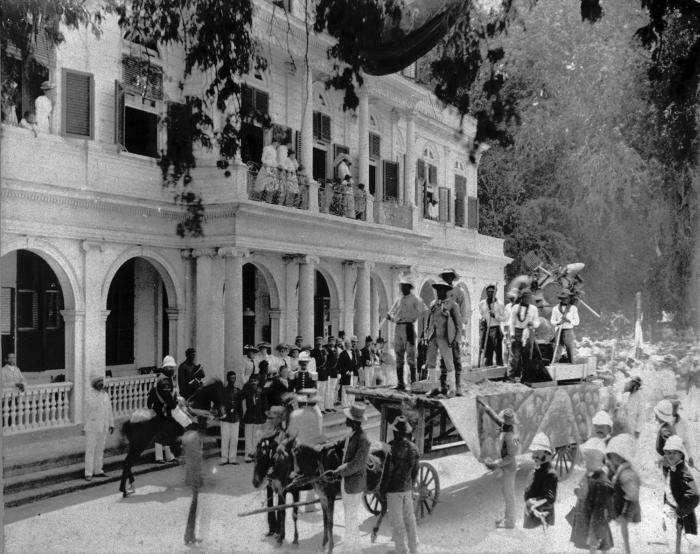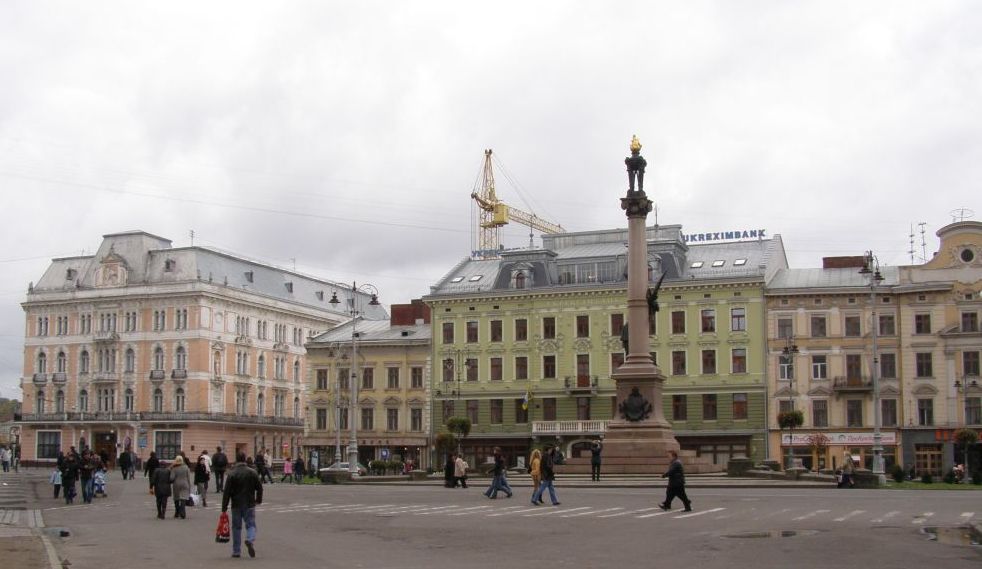|
Kościuszko At Racławice
''Kościuszko at Racławice'' (''Kościuszko pod Racławicami'') is an oil painting of the Battle of Racławice of 1794, painted by Jan Matejko in 1888, exhibited in the Gallery of 19th Century Polish Art in the Sukiennice Museum (Kraków). Description of the painting The interpretation of the painting was greatly influenced by Marian Gorzkowski's feuilleton ''Hints to Jan Matejko's latest painting "Kościuszko at Racławice", finished in April 1888.'' Tadeusz Kościuszko is dressed in a fashionable uniform tailcoat, identical to that in Michał Stachowicz's painting ''Kościuszko's Oath on the Main Square''. Father Antoni Gruszecki, then vicar at St. Mary's Church, later parish priest of Podgórze and papal chamberlain, served as a model. The second hero of the Battle of Racławice, Bartosz Głowacki, is depicted with a cap on a captured cannon. The co-organizer of the uprising, Hugo Kołłątaj, is dressed in black and sitting on a black horse (although he did not take part i ... [...More Info...] [...Related Items...] OR: [Wikipedia] [Google] [Baidu] |
Jan Matejko
Jan Alojzy Matejko (; also known as Jan Mateyko; 24 June 1838 – 1 November 1893) was a Polish painter, a leading 19th-century exponent of history painting, known for depicting nodal events from Polish history. His works include large scale oil on canvas, oil paintings such as ''Stańczyk (painting), Stańczyk'' (1862), ''Rejtan (painting), Rejtan'' (1866), ''Unia lubelska (painting), Union of Lublin'' (1869),'' Astronomer Copernicus, or Conversations with God'' (1873), or ''Battle of Grunwald (painting), Battle of Grunwald'' (1878). He was the author of numerous portraits, a gallery of List of Polish monarchs, Polish monarchs in book form, and murals in St. Mary's Basilica, Kraków. He is considered by many as the most celebrated Polish painters, Polish painter, and sometimes as the "national painter" of Poland. Matejko spent most of his life in Kraków. He enrolled at the Kraków Academy of Fine Arts at age fourteen, where he studied under notable artists such as Wojciech ... [...More Info...] [...Related Items...] OR: [Wikipedia] [Google] [Baidu] |
Racławice Panorama
The ''Racławice Panorama'' (Polish: ''Panorama Racławicka'') is a monumental (15 × 114 meter) cycloramic painting depicting the Battle of Racławice, during the Kościuszko Uprising. It is located in Wrocław, Poland. The painting is one of only a few preserved relics of a genre of 19th-century mass culture, and the oldest in Poland. The panorama stands in a circular fashion and, with the viewer in the center, presents different scenes at various viewing angles. A special kind of perspective used in the painting and additional effects (lighting, artificial terrain) create a feeling of reality. History The idea came from the painter Jan Styka in Lviv (then Lwów) who invited battle-painter Wojciech Kossak to participate in the project. They were assisted by Ludwik Boller, Tadeusz Popiel, Zygmunt Rozwadowski, Teodor Axentowicz, Włodzimierz Tetmajer, Wincenty Wodzinowski and Michał Sozański. The project was conceived as a patriotic commemoration of the 100th annivers ... [...More Info...] [...Related Items...] OR: [Wikipedia] [Google] [Baidu] |
Censorship In The Russian Empire
In the Russian Empire, government agencies exerted varying levels of control over the content and dissemination of books, periodicals, music, theatrical productions, works of art, and motion pictures. The agency in charge of censorship in the Russian Empire changed over time. In the early eighteenth century, the Russian emperor had direct control, but by the end of the eighteenth century, censorship was delegated to the Holy Synod of the Russian Orthodox Church, Synod, the Governing Senate, Senate, and the Russian Academy of Sciences, Academy of Sciences. Beginning in the nineteenth century, it fell under the charge of the Ministry of National Education (Russian Empire), Ministry of Education and finally the Ministry of Internal Affairs (Russia), Ministry of Internal Affairs. The history of censorship in the Russia began long before the emergence of the empire. The first book containing an index of prohibited works dates to the year 1073, in Kievan Rus. For several centuries these ... [...More Info...] [...Related Items...] OR: [Wikipedia] [Google] [Baidu] |
Hungarian National Museum
The Hungarian National Museum (, ) was founded in 1802 and is the national museum for the history, art, and archaeology of Hungary, including areas not within Hungary's modern borders, such as Transylvania; it is separate to the collection of international art in the Hungarian National Gallery. The museum is in Budapest VIII in a Neoclassical building, purpose-built during 1837–47 by the architect Mihály Pollack. History The Hungarian National Museum traces its foundation to 1802, when Count Ferenc Széchényi set up the National Széchényi Library. This would then be followed a year later by the donating of a mineral collection by Széchényi's wife. This led to the creation of the Hungarian National Museum as a general history and natural history museum, beyond being simply a library. In 1807, the Hungarian National Parliament passed legislation on the new institution and asked the nation to help donate to the museum. The Hungarian Parliament of 1832–1834 helped ... [...More Info...] [...Related Items...] OR: [Wikipedia] [Google] [Baidu] |
Chromolithography
Chromolithography is a method for making multi-colour printmaking, prints in lithography, and in theory includes all types of lithography that are printed in colour. However, in modern usage it is normally restricted to 19th-century works, and the higher quality examples from that period; almost all 21st-century colour printing uses lithography, but would not be described using the term chromolithography. When chromolithography is used to reproduce photographs, the term photochrome is frequently used. Lithography is a method of printing on flat surfaces using a flat printing plate instead of raised Relief print, relief or recessed Intaglio (printmaking), intaglio techniques."Chromolithography and the Posters of World War I." ''The War on the Walls''. Temple University. 11 April 2007. . Chromolithography became the most successful of several methods of color printing, colour printing developed in the 19th century. Other methods were developed by printers such as Jacob Christoph ... [...More Info...] [...Related Items...] OR: [Wikipedia] [Google] [Baidu] |
Juliusz Kossak
Juliusz Fortunat Kossak (15 December 1824 – 3 February 1899) was a Polish historical painter and master illustrator who specialized in battle scenes, military portraits and horses. He was the progenitor of an artistic family that spanned four generations,See list of Juliusz Kossak's descendants at " Kossak family", including second-, third- and fourth-generation painters, with links to individual articles. father of painter Wojciech Kossak and grandfather of painter Jerzy Kossak.Jerzy Jan Lerski, Piotr Wróbel, Richard J. Kozicki ''Historical Dictionary of Poland, 966-1945''See: Kossak, Juliusz and Wojciech; Greenwood Publishing Group, 1996, 750 pages, , Life Juliusz Kossak grew up in Lwów Poland. He obtained a degree in law at the Lwów University encouraged by his mother. At the same time he studied painting with Jan Maszkowski and Piotr Michałowski.Irena Kossowska, Art Institute of the Polish Academy of Sciences (''Instytut Sztuki Polskiej Akademii Nauk'') "Sylwet ... [...More Info...] [...Related Items...] OR: [Wikipedia] [Google] [Baidu] |
Tableau Vivant
A (; often shortened to ; ; ) is a static scene containing one or more actors or models. They are stationary and silent, usually in costume, carefully posed, with props and/or scenery, and may be theatrically illuminated. It thus combines aspects of theatre and the visual arts. They were a popular medieval form that revived considerably from the 19th century, probably as they were very suitable for recording by photography. The participants were now mostly amateurs, participating in a quick and easy form of amateur dramatics that could be brought together in an evening, and required little skill in acting or speaking. They were also popular for various sorts of community events and parades. In the late 19th and early 20th centuries, there was also a type of ''tableau'' used in the professional theatre, taking advantage of the extra latitude the law allowed for the display of nudity so long as the actors did not move. Tableaux featured ('flexible poses') by virtually nude ... [...More Info...] [...Related Items...] OR: [Wikipedia] [Google] [Baidu] |
Exposition Universelle (1889)
The of 1889 (), better known in English as the 1889 Paris Exposition, was a world's fair held in Paris, France, from 6 May to 31 October 1889. It was the fifth of ten major expositions held in the city between 1855 and 1937. It attracted more than thirty-two million visitors. The most famous structure created for the exposition, and still remaining, is the Eiffel Tower. Organization The exposition was held to celebrate the 100th anniversary of the Storming of the Bastille, which marked the beginning of French Revolution, and was also seen as a way to stimulate the economy and pull France out of an economic recession. The exposition attracted 61,722 official exhibitors, of whom twenty-five thousand were from outside of France. Admission price Admission to the exposition cost forty centimes, at a time when the price of an "economy" plate of meat and vegetables in a Paris cafe was ten centimes. Visitors paid an additional price for several of the exposition's most popular att ... [...More Info...] [...Related Items...] OR: [Wikipedia] [Google] [Baidu] |
Hotel George (Lviv)
Hotel George is a hotel located in Lviv, Ukraine that was built in 1899–1900 and opened in 1901. It was designed by the Fellner & Helmer architecture studio. History The history of the hotel dates back to 1793 when an inn was constructed on the site. In 1811 it was replaced by a new building called "Russie Hotel", a three-story hotel with two entrances. On the Chorążczyzna Street (now Tschaikowski Street) there was a large garden. The hotel was taken over in 1816 by the Lviv merchant, George Hofmann (1778–1839), whom the hotel was named after. It was demolished in 1899. The new building was constructed from 1899 to 1901 by Fellner & Helmer, with participation of the Lviv architects Iwan Lewiński and Julian Cybulski. The new hotel was inaugurated on January 8, 1901. At the time, it had 93 rooms, including 32 luxury-class rooms. The hotel was extended by two floors in 1906. From 1910 to 1912, it housed Alfred Altenberg's bookstore on the ground floor. The hotel was comp ... [...More Info...] [...Related Items...] OR: [Wikipedia] [Google] [Baidu] |
Lviv
Lviv ( or ; ; ; see #Names and symbols, below for other names) is the largest city in western Ukraine, as well as the List of cities in Ukraine, fifth-largest city in Ukraine, with a population of It serves as the administrative centre of Lviv Oblast and Lviv Raion, and is one of the main Ukrainian culture, cultural centres of Ukraine. Lviv also hosts the administration of Lviv urban hromada. It was named after Leo I of Galicia, the eldest son of Daniel of Galicia, Daniel, King of Ruthenia. Lviv (then Lwów) emerged as the centre of the historical regions of Red Ruthenia and Galicia (Eastern Europe), Galicia in the 14th century, superseding Halych, Chełm, Belz, and Przemyśl. It was the capital of the Kingdom of Galicia–Volhynia from 1272 to 1349, when it went to King Casimir III the Great of Kingdom of Poland, Poland in a Galicia–Volhynia Wars, war of succession. In 1356, Casimir the Great granted it town rights. From 1434, it was the regional capital of the Ruthenian ... [...More Info...] [...Related Items...] OR: [Wikipedia] [Google] [Baidu] |
Bukovina
Bukovina or ; ; ; ; , ; see also other languages. is a historical region at the crossroads of Central and Eastern Europe. It is located on the northern slopes of the central Eastern Carpathians and the adjoining plains, today divided between Romania and Ukraine. Inhabited by many cultures and peoples, settled by both Ukrainians ( Ruthenians) and Romanians (Moldavians), it became part of the Kievan Rus' and Pechenegs' territory early on during the 10th century and an integral part of the Principality of Moldavia in the 14th century where the capital of Moldavia, Suceava, was founded, eventually expanding its territory all the way to the Black Sea. Consequently, the culture of the Kievan Rus' spread in the region during the early Middle Ages. During the time of the Golden Horde, namely in the 14th century (or in the High Middle Ages), Bukovina became part of Moldavia under Hungarian suzerainty (i.e. under the medieval Kingdom of Hungary). According to the Moldo-Russian Ch ... [...More Info...] [...Related Items...] OR: [Wikipedia] [Google] [Baidu] |








